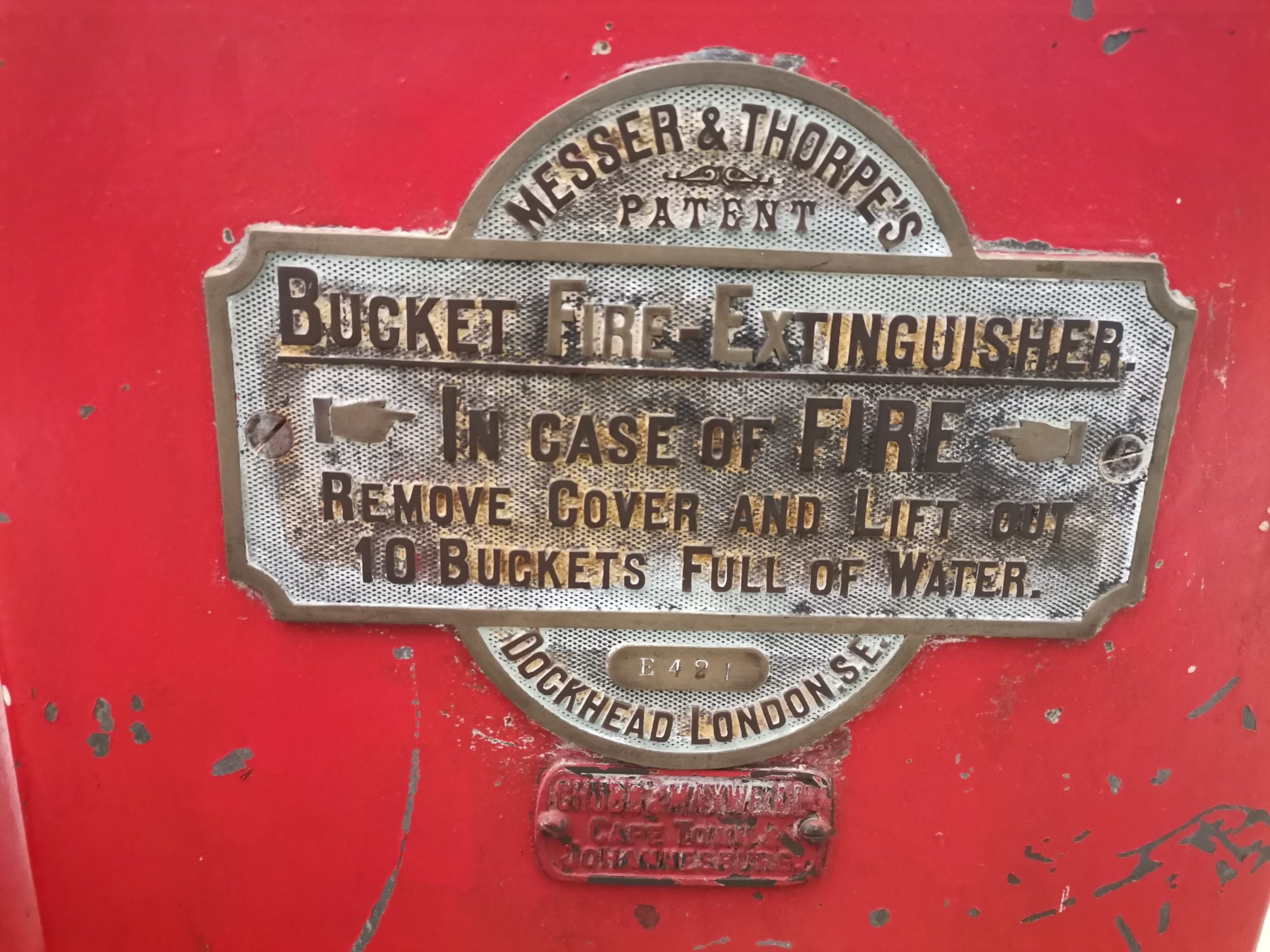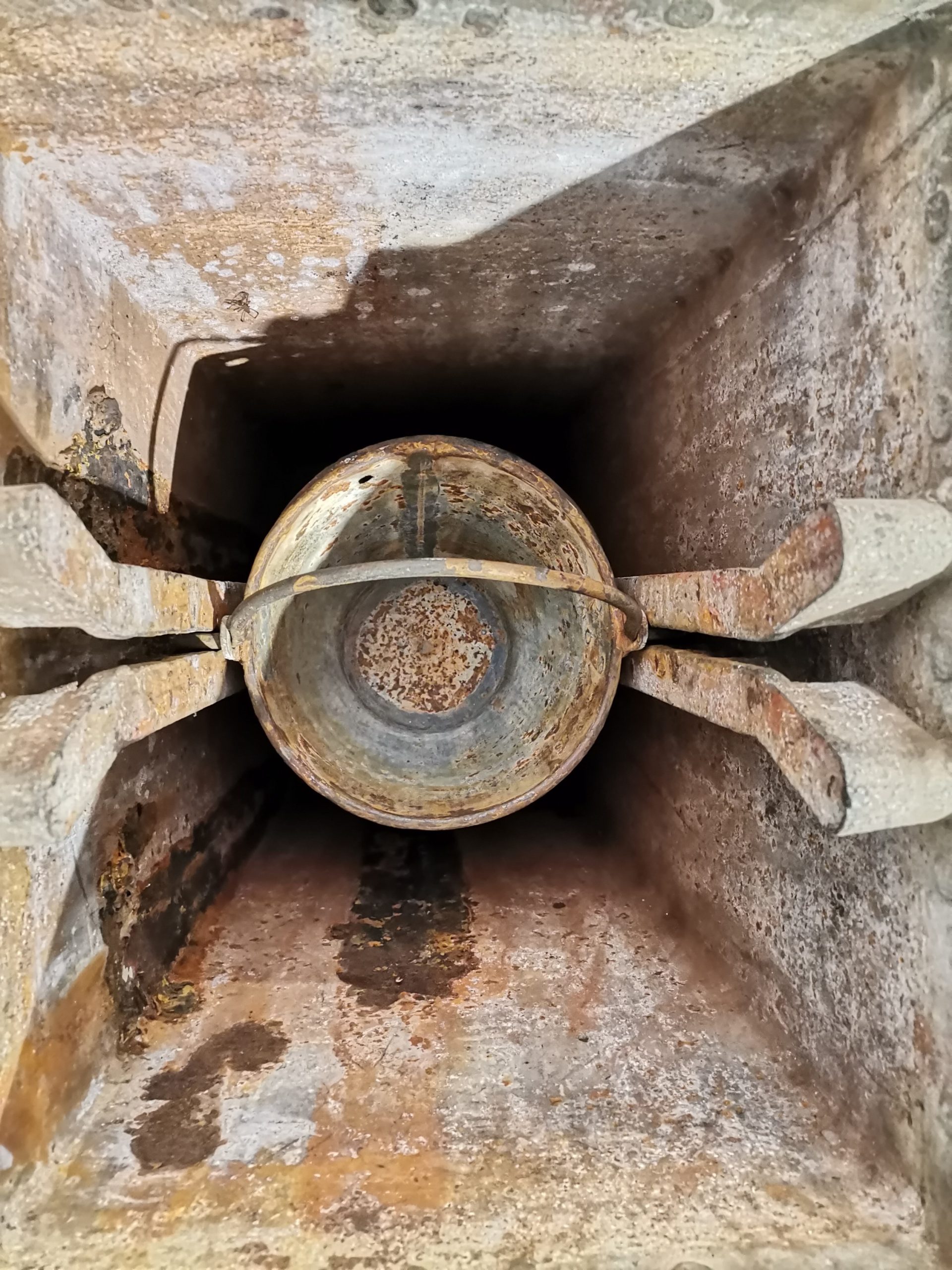
13 Dec Stories From the Stacks – Buckets of Fun
A regular series about the museum’s motoring memorabilia and behind-the-scenes activities, compiled and written by FMM’s Assistant Curator Sian Theron. This month, Sian has buckets of fun fighting fires…
Throughout FMM’s inventory project that I have been working on, I have found a great many very interesting artefacts, albeit a few with a somewhat nebulous link to motoring, but thoroughly fascinating nonetheless. FMM’s predecessor was the Heidelberg Transport Museum, and when that museum closed its doors, much of the collection was transferred to Franschhoek and amongst all the items there was a considerable collection of fire-fighting paraphernalia.
One of the great joys of museum work is to look after and work with objects that have oft been forgotten to time and progress. The item taking the spotlight in this month’s article is one such example – an antique bucket fire extinguisher – and it was a lot of fun to unpack.
In the days when vehicles and fire extinguishers were few and far between, the only way to fight a fire was by manpower and the humble bucket. Of course, these buckets would need to be filled with water. With fires, every second counts, so an empty bucket would be pretty useless until filled, which could take a while if the closest tap or river was a way away. One could keep filled buckets lying around, but the water would evaporate and we know how easy it is to forget to regularly top them up, due to fires not being a common occurrence.
Enter Messer and Thorpe of Gedling Street, Dockhead, London. These two gentlemen came up with, and patented, what was at the time a revolutionary invention, namely the bucket fire extinguisher. Comprising a rectangular galvanised iron tank, the bucket hydrant was, in turn, filled with water along with a set of 10 galvanised buckets that were submerged and slotted into the tank. When needed, one could pop off the felt-lined lid and haul out a full bucket of water to douse the flames. The closed lid ensured there was no evaporation and kept the water clean. Well-placed bucket hydrants made fighting fires less troublesome.
The brilliant part of the invention is that it factored-in the suction effect of submerged buckets and designed the buckets in such a way that they slotted into each other in such a manner that when the handle of the top bucket was pulled up and released from the stack, the rest of the buckets were held back.
FMM’s example is currently stored in our workshop. It is a bit rusty on the interior but still retains the signature red paint on its exterior along with the bronze plaque proclaiming its inventors, along with the instruction, “In case of fire, remove cover and lift out 10 buckets full of water. This bucket fire extinguisher is extinguisher E421”. Clang, clang…

Inside: A bit rusty, but the bucket and storage system can be seen.



